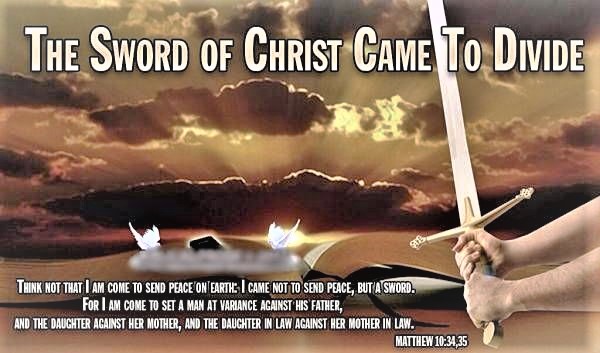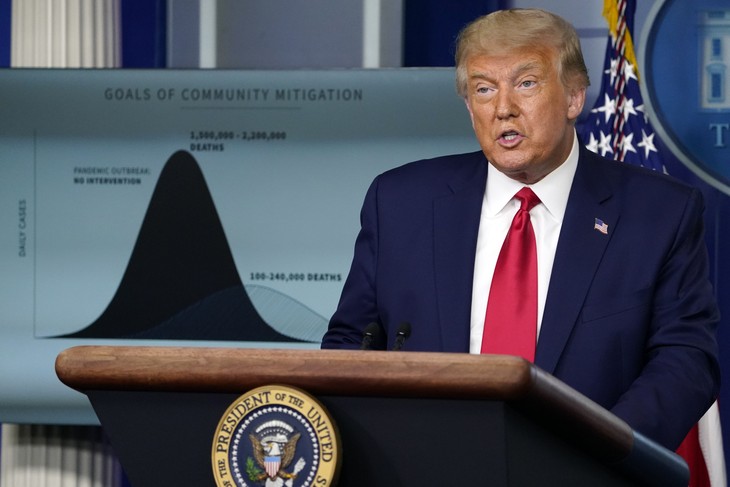Trump said the framing of history around race was “toxic propaganda” and “a form of child abuse in the truest sense of those words” — specifically calling out critical race theory, a concept that was started around the idea that the law and legal institutions are inherently racist. He accused Democrats of pushing education that makes students “ashamed” of America’s history.
He also took aim at the 1619 Project, a New York Times-backed initiative that focused on the “consequences of slavery and the contributions of black Americans at the very center of the story we tell ourselves about who we are as a country.” The project, which won the Pulitzer Prize for commentary, was released last year to coincide with the anniversary of slaves’ being brought to the Virginia Colony 400 years ago.
The New York Times 1619 Project sought to alter America’s national narrative by artificially imposing a dishonest template to our history — an overlay that made race the primary mover of events and people. They’ve been called to account for it by historians of both the right and the left.
So what’s the difference between a dishonest attempt to trash American history and Trump’s efforts to glorify it? Well, his supporters applaud the president’s actions, so that’s one difference.
But propaganda is propaganda, whether from the right or the left.
Trump has been increasingly opposing anti-racism education efforts while denying that the country has a problem with racial inequality. When asked about the country’s history of racial discrimination at a town hall gathering this week, Trump said “I hope there’s not a race problem” before going on to talk about his support in the polls from Black voters.
Contemporary politics aside, the real problem with Trump’s idea is that it’s far too limiting to talk about American history in such a monochromatic way. There is not a “patriotic” view of history, nor is there a “non-patriotic” view of history. There are the basic facts of “what happened” and then there are interpretations of what happened. The argument isn’t necessarily about America, it’s about the prism that we all look through as individuals to glean understanding from those facts of history. If you’re black, I daresay your interpretation of the same facts that a white person interprets will be different.
BAM: Trump Eviscerates the Noxious Marxism Behind the Riots and the 1619 Project
Is it a “wrong” interpretation? It is if the events being interpreted are wrenched out of context and other facts are ignored. That appears to be what Trump is railing against and what many of us on the right have been railing against for decades. The selective choice of “facts” that radically alters the interpretation of our national narrative is dishonest and does schoolchildren a disservice.
But is the best way to address the problem offering a counter-narrative just as dishonest, just as one-dimensional? I was given a “patriotic education” by the Sisters of Mercy (God bless them) at a private parochial school. The way that our “history” was taught guaranteed that we would love America, admire our founding, feel bad for the slaves and Indians, and celebrate the fact that we were the greatest nation on earth because God loved us and blessed us.
Not exactly penetrating scholarship.
America is a place of myth and legend. Its myths are glorious, its legends heroic. The reality of America has been shown to bring out the very best of the human race and let shine its noble qualities. But always, running underneath the glitz and gold has been a dark current of suffering, oppression, and evil.
The amazing thing is that the overseer’s lash existed alongside the miracle of American agriculture, the genius of the cotton gin, and the courage and fortitude of the southern soldier whose determination in the face of overwhelming odds can still be admired today — at least until we’re ordered not to admire it anymore.
America was born schizophrenic. “How is it we hear the loudest yelps for ‘freedom’ by the drivers of negro slaves?” asked the English man of letters Samuel Johnson during the Stamp Act crisis of 1764. What many on the left refer to as “hypocrisy” is an intellectual duality that allows our free self to exist in exactly the same place at exactly the same time as our oppressive self. It has been so since before our founding and will continue through Trump and on into the future as interpretations of what America means wax and wane between the extremes of self-love and self-hate.
Of course, American history isn’t locked up in a closet, guarded 24 hours a day by CIA agents. It’s all there, all of it. The good, the bad, the heroic, the ugly. Every sin ever committed by our government. Every sublime act of heroism and charity. It’s right in front of our noses — every possible interpretation of what happened in America’s past just a few keystrokes away.
In the end, how we interpret American history is a choice. And it would be far better to show kids how best to make that choice by teaching them a wide variety of viewpoints and interpretations than propagandize them by indoctrinating them with only one.


